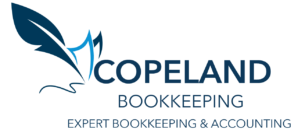
Managing tax compliance is crucial for construction companies, especially when working with subcontractors and vendors. Two essential tax forms—W-9s and 1099s—play a key role in ensuring your business meets IRS requirements and avoids costly penalties. In this article, we’ll break down what these forms are, why they matter, and how to manage them effectively.
Understanding W-9s and 1099s
What is a W-9?
A W-9, or Request for Taxpayer Identification Number and Certification, is a form you use to collect important taxpayer information from individuals or businesses you hire. This includes:
- Name and address
- Taxpayer Identification Number (TIN) or Social Security Number (SSN)
Subcontractors and vendors who are not your employees should complete a W-9 before you issue their first payment. This ensures you have the necessary information to file accurate tax forms later.
What is a 1099-NEC?
The 1099-NEC (Non-Employee Compensation) is a tax form used to report payments of $600 or more made to subcontractors and independent contractors during a tax year. It provides the IRS with a record of non-employee earnings and helps ensure accurate tax reporting.
Why W-9s and 1099s Are Critical for Construction Companies
Legal Compliance
The IRS requires businesses to report payments made to non-employees. Failing to do so can result in fines or even trigger audits. W-9s and 1099s help ensure your business complies with federal tax laws.
Avoiding Penalties
If you fail to file 1099 forms or submit incorrect information, you may face penalties ranging from $50 to $280 per form, depending on how late the submission is. Collecting W-9s upfront reduces the likelihood of errors.
Improved Record-Keeping
Proper documentation of payments to subcontractors simplifies tax preparation and ensures you’re ready if the IRS requests an audit.
When and How to Use W-9s and 1099s
Collecting W-9s
- When to Request: Always request a completed W-9 from subcontractors and vendors before issuing their first payment.
- How to Store: Keep W-9 forms in a secure location, whether digitally or in physical files, to protect sensitive information.
Issuing 1099-NECs
- Annual Deadline: The IRS requires you to send 1099-NEC forms to subcontractors and file them with the IRS by January 31st each year.
- Filing Methods: Use accounting software, tax professionals, or online filing services to prepare and submit 1099s efficiently.
Common Mistakes to Avoid
- Failing to Collect W-9s: Skipping this step makes it harder to file accurate 1099s and increases the risk of errors.
- Misclassifying Workers: Ensure you correctly classify employees versus independent contractors to avoid penalties.
- Omitting Payments Under $600: While reporting smaller payments isn’t required, keeping records of all transactions is a good practice.
- Missing Deadlines: Late filings can result in significant penalties. Stay organized to meet IRS deadlines.
Practical Tips for Construction Business Owners
Set Up a System
Automate W-9 requests and 1099 preparation using accounting software like QuickBooks or specialized apps. This reduces manual work and minimizes errors.
Vet Your Subcontractors
Before hiring, verify that subcontractors have valid taxpayer identification numbers to avoid complications during tax season.
Work with Professionals
Partner with a bookkeeping or tax professional who understands the construction industry to ensure compliance and streamline processes.
Stay Updated
Tax laws change frequently. Stay informed about IRS updates to forms and filing requirements to keep your business compliant.
Conclusion
W-9s and 1099s are essential tools for managing subcontractor relationships and ensuring your construction business stays compliant with tax regulations. By understanding their purpose, avoiding common mistakes, and implementing efficient systems, you can save time, reduce stress, and avoid costly penalties.
If you need help managing your W-9s and 1099s, consider reaching out to a bookkeeping professional specializing in the construction industry. A proactive approach today can save you from headaches tomorrow
Disclaimer
This article is for informational purposes only and should not be considered as legal, financial, or tax advice. Please consult a qualified professional for advice specific to your business needs.
